Apples are not just fruits – they’re an essential part of our traditions, recipes, and even our health regime. Among these, Pink Lady apples stand out for their sweet yet tart flavor, crispy texture, and vibrant color. But what if your beloved Pink Lady apples aren’t in season or readily available? This article takes you on a journey into the world of apples, exploring the unique attributes of Pink Lady apples, their myriad uses in culinary applications, and the best substitutes for these popular apples. We’ll also delve into the pros and cons of each alternative so you can choose wisely based on flavor, texture, culinary use, and even your gardening abilities.
Understanding the Characteristics of Pink Lady Apples
Understanding Pink Lady Apples
Pink Lady apples, also known as Cripps Pink, are a fabulous hybrid apple showcasing a beautiful pink blush over a bright yellow or green skin. The inside reveals a crispy, juicy flesh in a stunning white color. When one takes a bite, they experience an irresistible blend of tartness and sweetness with a hint of fizz, a flavor profile that sets Pink Lady apples apart. Known for their delightful balance of sugar and acid, they are loved worldwide for their crisp texture and refreshing sweetness.
Pink Lady apples thrive in a specific set of environmental conditions. They demand a longer and hotter growing period compared with many other apple types, ideally being harvested in late fall. This makes them especially popular in the southern states of the U.S. However, their choosy growth requirements can often lead to production challenges. Because of this, there are occasions when one might need an alternative to the beloved Pink Lady.
Benefits of Pink Lady Apples
Pink Ladies aren’t just tasty; they’re also packed with health benefits. They provide a great source of dietary fiber and vitamin C, making them a healthy option for any apple lover. They are perfect for cooking, baking, and juicing due to their balance of sweetness and acidity, making them an excellent choice for a wide array of culinary uses, from apple pies to salads.
Sublime Alternatives for Pink Lady Apples
-
Jazz Apples
One stellar alternative to Pink Lady apples is the Jazz apple variety. A hybrid of the succulent Royal Gala and tangy Braeburn apples, Jazz apples mirror the tantalizing sweet and tart combination offered by Pink Ladies. Also, their firm, crunchy texture stays intact when cooked, making them adaptable to diverse culinary applications.
-
Honeycrisp Apples
The Honeycrisp apple is yet another impeccable substitute. Its characteristic crispness and delicate sweet flavor offer a parallel eating pleasure to Pink Lady. Due to its cellular structure, which is significantly larger compared to other apple types, biting into a Honeycrisp delivers a distinct, pleasant crunch.
-
Fuji Apples
Don’t overlook the valuable role of Fuji apples as a possible alternative. They echo the refreshing sweet taste and crispiness found in Pink Lady apples while being highly adaptable to various cooking styles and raw consumption. Fuji apples are also widely available with a longer shelf life, maintaining their enticing texture and flavor.
Identifying the unique elements of these apple types is crucial when seeking a comparable substitute for Pink Lady apples. Each one offers a harmonious blend of sweetness and tartness, firm structure, and varied usability, all aligning closely with the Pink Lady experience.
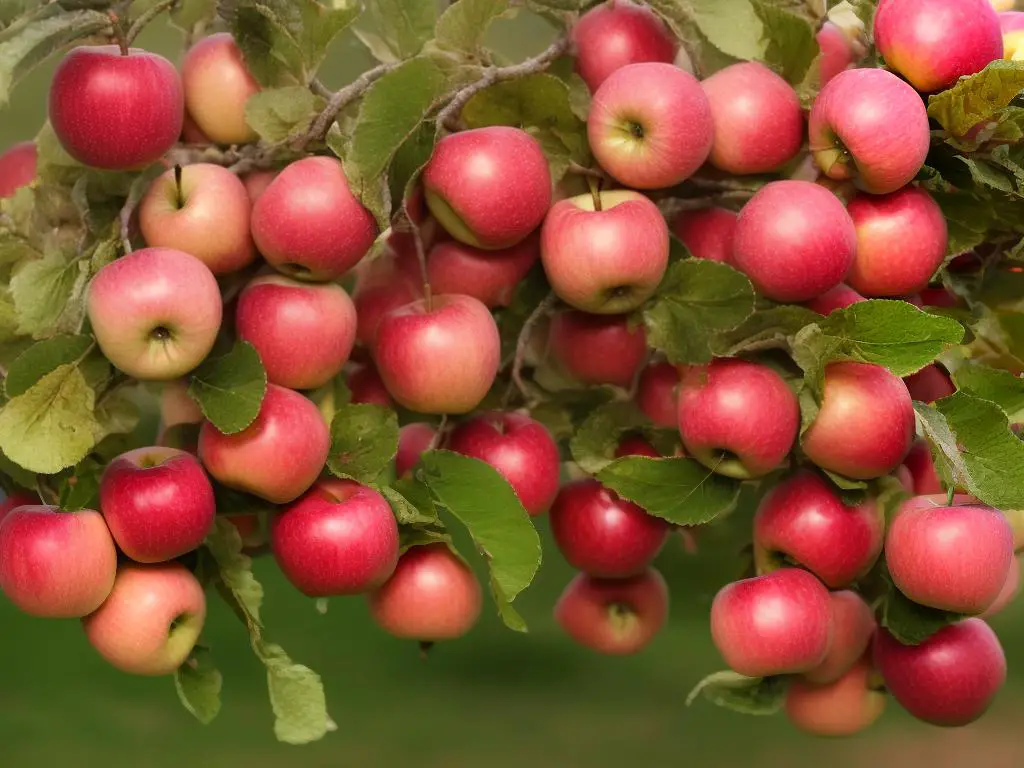
The Role of Apples in Culinary Applications
Unveiling the Culinary Significance of Apples
Apples, beyond their tastiness and widespread preference as a fruit, play a pivotal role in cuisine across the globe. Their varied flavor profiles, transitioning from sugary to tangy, along with their resilience under different cooking methods, place them highly in numerous dishes. Apples add a sweet, crispy surprise to salads, lay the groundwork for flavorful sauces, form the delightful balance of sweet and sour in pies and other baked treats, and can even captivate taste buds on their own in recipes like baked apples.
The Role of Pink Lady Apples in Cooking and Baking
The Pink Lady apple, known for its bright pink skin and tart yet sweet flavor, is one of the many types of apples that chefs and home cooks alike might use in their recipes. The Pink Lady is firm and crisp, making it a good choice for dishes that require the apple to retain its shape, such as apple pies or tarts. Its unique flavor, balancing sweetness and acidity, also makes it a good match for savory dishes or salads.
However, Pink Lady apples can sometimes be harder to find or more expensive than other varieties. The Pink Lady also has a very distinct flavor profile, which might not complement every recipe. For these reasons, you might be interested in finding a substitute for this apple variety.
Optimal Apple Varieties to Substitute Pink Lady Apples
- Honeycrisp Apples: Renowned for their sweet yet slightly tart flavor, Honeycrisp apples share a similar crunchy texture to Pink Lady varieties. Their high sugar content also suggests that they caramelize well, making them a suitable substitute, particularly for baking.
- Granny Smith Apples: While they are noticeably tarter than Pink Lady apples, Granny Smiths are a commendable choice for those in search of an apple that retains its structure when cooked. In addition to offering a distinct advantage of being widely available and affordable.
- Braeburn Apples: Characterized by a balance of sweet and tart accompanied by a firm, crispy texture, some enthusiasts find Braeburns to be more flavorful and aromatic than Pink Lady apples and a worthy substitute.
- Jazz Apples: A new addition to the apple-family, Jazz is a hybrid, originating from Gala and Braeburn apples. Its sweet, crunchy, juicy nature with a tangy aftertaste offers a close match to the Pink Lady’s unique flavor.
- Cripps Pink Apples: Identified by their late-season ripeness, this variety is closely related to the Pink Lady. Its firm and mildly tart sweetness works well as a substitute in instances when Pink Lady apples are unavailable.
Even though each apple variety possess a unique flavor profile, those listed here are comparable to Pink Lady apples in most recipes, often without significantly altering the resultant dish. However, experimentation is encouraged to discover your ideal alternative.
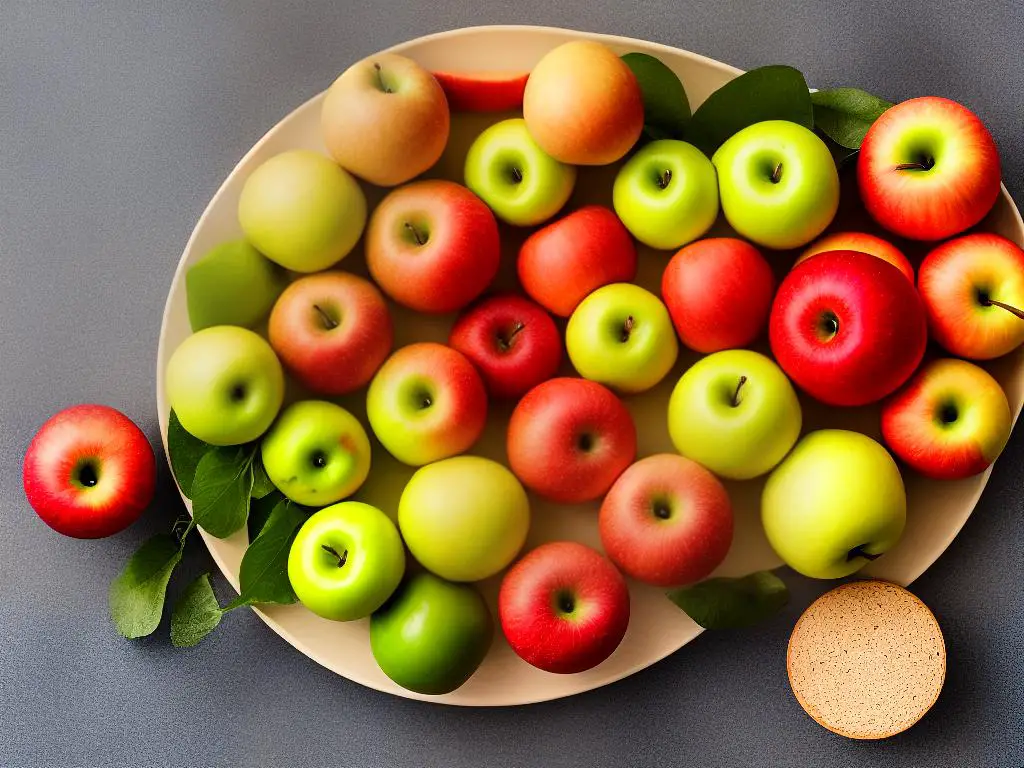
Quality Apple Substitutes for Pink Lady
Ambrosia Apples: An Exquisite, Sweet, and Crisp Substitute
Originally from Canada, Ambrosia apples are celebrated for their extra sweet, almost honeyed, flavor. Distinguished by their unique red-striped skin layered over a creamy yellow backdrop, and crunchy, juicy pulp, these apples exude a pleasing aroma and provide a delightful crunch upon biting.
Harvested primarily in the early fall, Ambrosia apples impressively maintain their quality for an extended duration post-picking. Their natural resistance to browning after being cut makes them an impressive contender for salads, fruit platters, or simply as a fresh snack by itself.
Jazz Apples: An Enticing Fusion of Flavors
Born from the fusion of two apple varieties, the Braeburn and the Royal Gala, Jazz apples offer a unique taste experience. They are grown in New Zealand and are known for their tangy yet sweet taste mixed with a hint of peardrop flavor. The taste has been quite a hit among apple enthusiasts, with Jazz steadily climbing the ranks of beloved apple types.
Jazz apples boast a beautiful blush red skin over a yellow-green base. They are super crisp and juicy, offering a delightful texture. Their flavor profile and firmness make them suitable for both eating raw and culinary uses, such as in muffins or pies.
Honeycrisp Apples: As Sweet as Honey, as Crisp as a Spring Morning
Honeycrisp apples were introduced by the University of Minnesota, and their popularity has soared since their commercial introduction. They offer a juicy, incredibly sweet, slightly tart taste and an exceptionally crisp texture – just as their name suggests.
With their large size, mottled red-over-yellow skin and longer storage life, Honeycrisps have become a favorite among apple lovers. They’re perfect not only for a healthy snacking option but also for a variety of culinary purposes. The texture of a Honeycrisp holds up even when baked, which makes them a great choice for delicious apple pie fillings.
Fuji Apples: A Crisp, Juicy, and Sweetly Flavored Delight
Originally developed in Japan, Fuji apples offer a superbly sweet flavor, arguably one of the sweetest apple varieties. They have a dense flesh that’s juicy and supremely crisp. Their skin, a combination of yellow-green with red highlights, provides a luring aesthetic appeal.
Fuji apples have a very long shelf life compared to other apple varieties. Their powerful sweetness and delightful crunch make them perfect for any apple-based dessert, raw snacks, salads, or even pairing them with savory dishes for a flavor contrast.
All the apple types mentioned are indeed wonderful substitutes for Pink Lady apples, each boasting flavors and textures that closely mimic those of this beloved variety. The ultimate choice, of course, would depend on individual preferences and specific culinary requirements. So feel free to try each one until you stumble upon your newfound favorite apple variety!
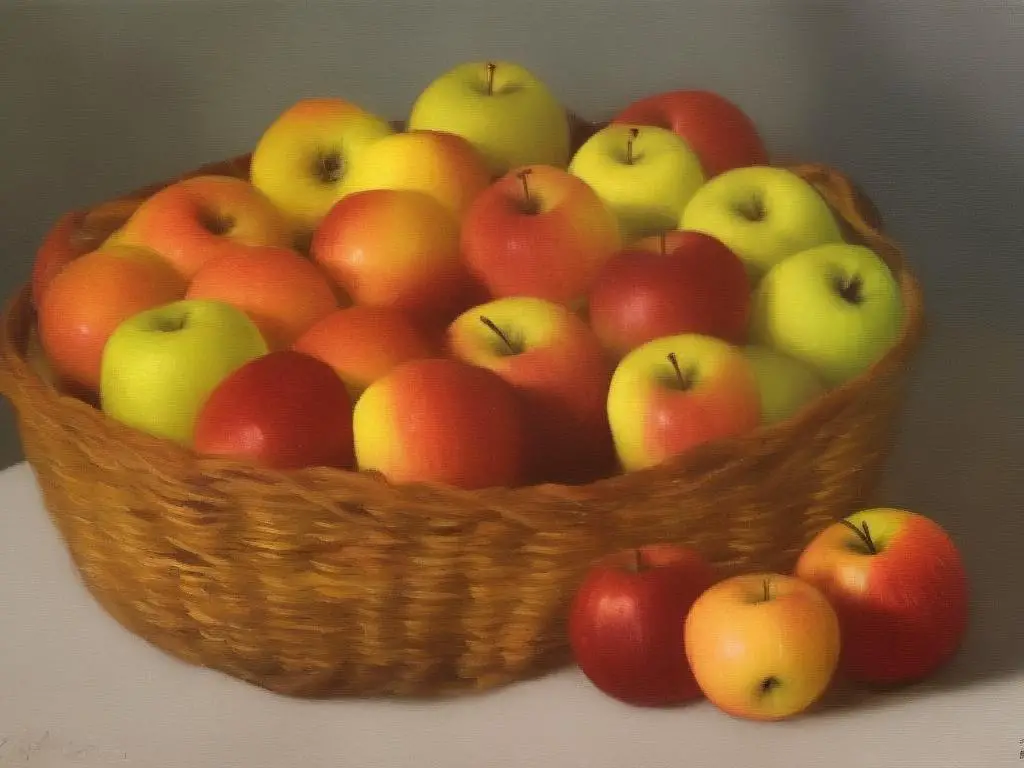
Pros and Cons of Each Alternative
The Art of Swapping Pink Lady Apples for Braeburns
For diehard apple lovers, the Braeburn apple is a prized selection that offers a balanced flavor profile. Found in different parts of the world, Braeburn apples have made their mark from New Zealand to the United Kingdom and the United States. Their distinct taste and ability to blend well in various recipes make them a crowd favorite.
The Braeburn’s captivating blend of sweet and tart with a hint of tang is much like that of Pink Lady apples, making it an ideal alternative. Its firmness provides the toothsome crunch many crave in an apple. Also, the Braeburn apple is harvested during the late fall and winter, and when stored properly, its life span can last for weeks or even months.
Exploring the Golden Delicious Route
If you prefer something a tad sweeter and less tart than Pink Lady apples, then Golden Delicious apples might be the choice for you. Apart from enjoying them fresh, these apples often find their way into baking, saucing, and pie making.
Often recognized by their thin golden skin and the crispy, juicy flesh beneath it, Golden Delicious apples are harvested mid-fall and can be stored for a decent period in a cool, dark place.
Indulging in Gala Apple Delights
Originating from New Zealand, Gala apples are contenders when it comes to sweetness. With a flavor profile that hints at vanilla and banana, they can serve as a wonderful substitute for Pink Lady apples.
These apples come with a satisfying crunch that’s ideal for numerous dishes, both savory and sweet. Gala apples are harvested in the late summer to mid-fall. However, because of their limited shelf-life, it’s best to consume them shortly after picking.
Choosing the Closest Match with Cripps Pink
If you are on the search for a substitute that closely mirrors Pink Lady Apples, you can’t miss out on the Cripps Pink variety. They share similar attributes, from their tangy flavor to their distinctive color and crunchy texture.
Bearing fruit slightly later than Pink Lady apples, Cripps Pink apples have excellent storage capabilities and can be savored throughout winter when stored correctly. Ultimately, the apple that appeals most to your culinary interests and taste buds should be your choice.
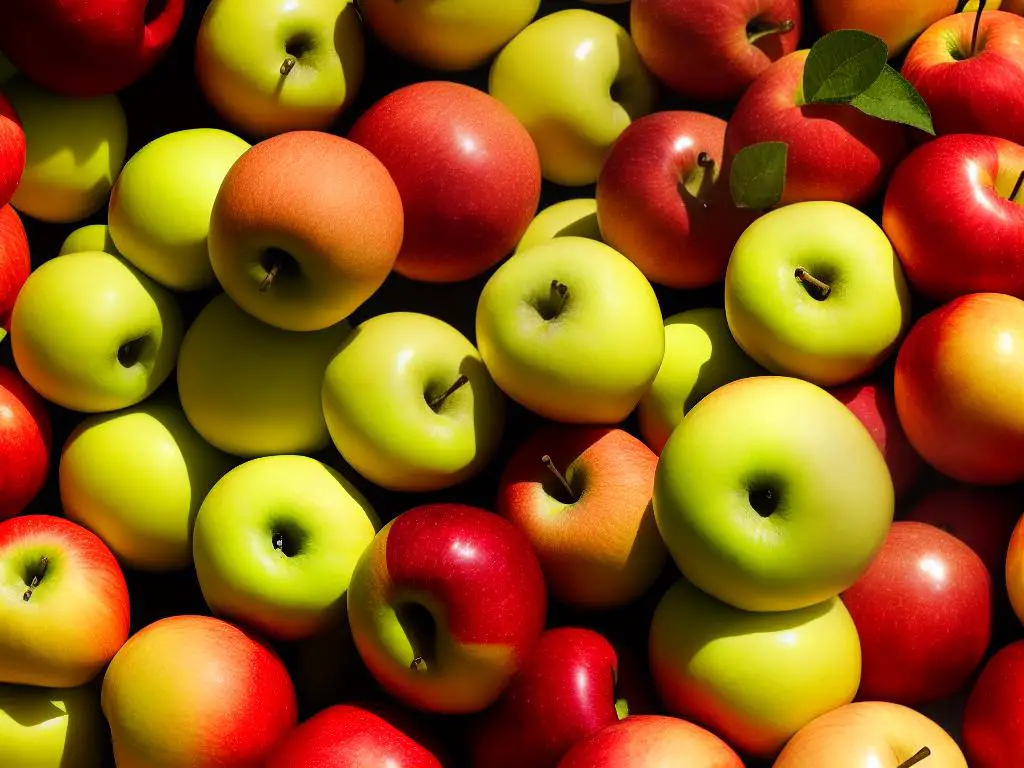
Tips on Growing Apple Substitutes
Finding Joy in Growing Honeycrisp Apples
If you are contemplating other tasty alternatives to Pink Lady apples, Honeycrisp apples are guaranteed to live up to expectations. Originating from Minnesota, USA, these apples are loved for their pleasant contrast of sweetness and tartness. One bite into their crunchy texture and you’re guaranteed to fall in love!
Honeycrisp apple trees flower in the spring and offer fruits ready for harvest from late September through to mid-October. They thrive best in hardiness zones 3-6, which have a cool to moderate climate.
Cultivation Requirements and Challenges
Honeycrisp apple trees demand full sun exposure, at least 6 hours of sunlight daily for optimum growth. They also require well-drained, acidic soil with a pH range of 6.0 to 7.0. Deep, loamy soil rich in organic matter offers the best conditions for healthy growth. However, the tree can tolerate a range of soil types, including clayey and sandy soils, provided they are well-drained.
One of the main challenges with growing Honeycrisp apples is their susceptibility to apple scab, a fungal disease that induces unsightly marks on the fruit and leaves. The tree also has a propensity for “biennial bearing,” which means it might produce a bumper crop one year followed by a dramatically smaller yield the following year.
To manage apple scab, conventional or organic fungicides can be used, as per manufacturer’s recommendations. Pruning and thinning the fruit can help address biennial bearing, ensuring more consistent production.
Care and Maintenance
A well-maintained watering schedule is crucial to the Honeycrisp apple tree’s growth. Young trees require weekly watering while mature trees will only require watering during dry periods. For optimal tree health and productivity, it’s recommended to apply a balanced slow-release fertilizer in early spring.
Since the Honeycrisp is prone to developing a dense canopy, regular annual pruning is necessary. Late winter or early spring is the optimum pruning time, giving the tree a chance to heal before new growth emerges.
Growing RubyFrost Apples: The Reliable Substitute For Pink Lady Apples
Like Pink Lady apples, the RubyFrost apples are known for their crisp texture and mildly tart flavor, which makes them great for eating fresh or cooking. Their tough skin and high vitamin C content allow them to be stored for extended periods without compromising texture or taste.
Originating in Geneva, New York, RubyFrost apples blossom in spring, with harvest from late fall through winter.
Essential Conditions and Challenges
RubyFrost apple trees thrive in USDA hardiness zones 5-8, requiring a minimum of two different apple varieties nearby to ensure adequate cross-pollination. Like other apple trees, RubyFrost variety also appreciates full sun, well-drained soil, and consistent watering.
Regardless of the advantages, RubyFrost trees too have their share of challenges. Similar to Honeycrisp, they are also susceptible to apple scab and other apple tree diseases.
Caring Techniques
A slow-release granular fertilizer or a natural compost applied during spring provides vital nutrients. Pruning helps maintain shape and health. Pruning should be performed during dormancy, preferably in late winter or early spring.
Watering should also accord with the tree’s maturity. While young trees need frequent watering, mature trees only need additional water during dry periods.
Finally, a protective layer of mulch helps retain soil moisture and inhibits weed growth. Whether you’re growing Honeycrisp or RubyFrost apples, adequate care, and attention to detail will ensure you achieve a fruitful harvest, providing an enjoyable alternative to the Pink Lady Apple.
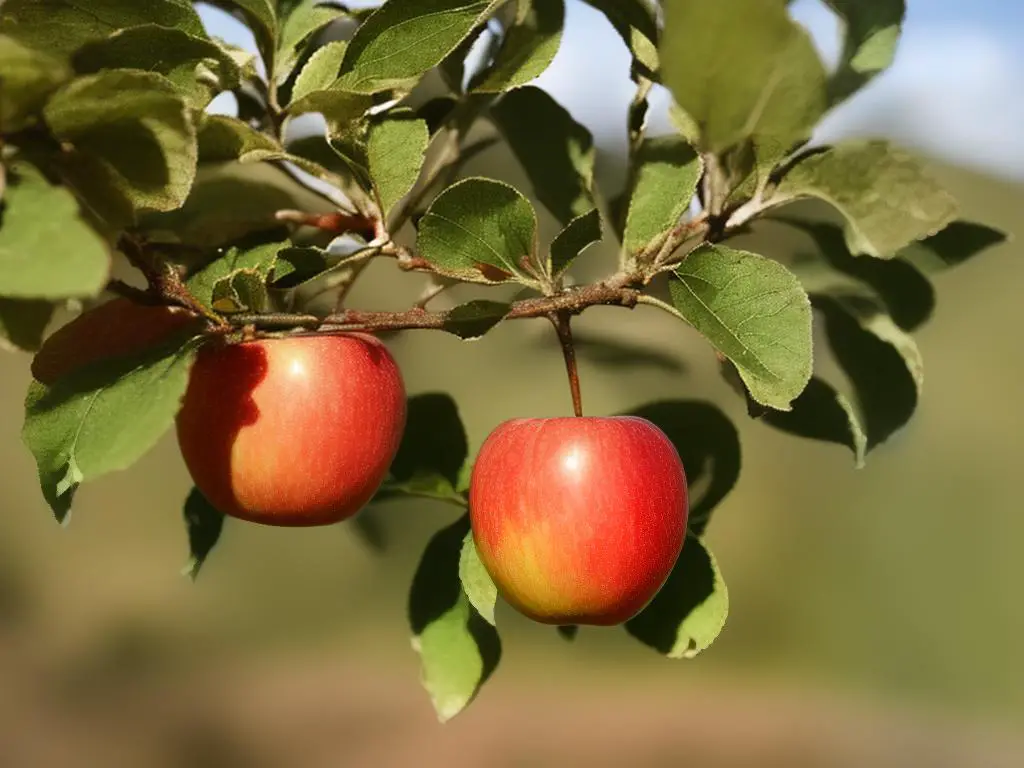
We hope this exploration into the realm of apples has armed you with a wealth of knowledge, whether you’re a baker, chef, or just a home cook wanting to add some variety to your apple dishes. The beauty of the culinary world lies in experimentation and diversity – so don’t hesitate to branch out and try new apple varieties as substitutes for Pink Ladies. Each has its unique character that can impart surprising and delightful changes to your cooking and baking. Plus, if you’re an avid gardener ready to experiment with apple cultivation, the tips and insights provided for growing apple substitutes will prove helpful. Indulge in the bounty of Mother Nature and discover a new favorite among these Pink Lady apple alternatives.